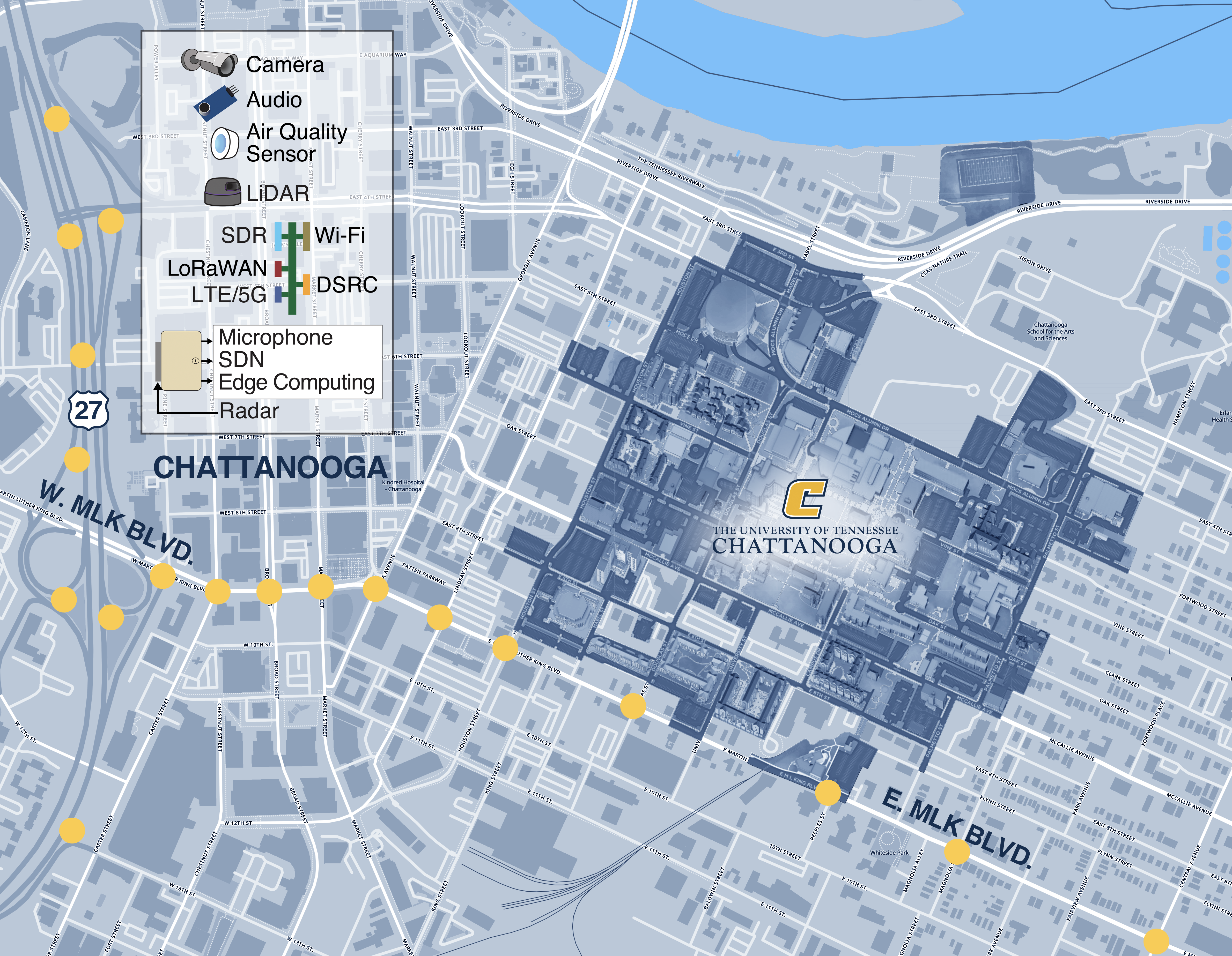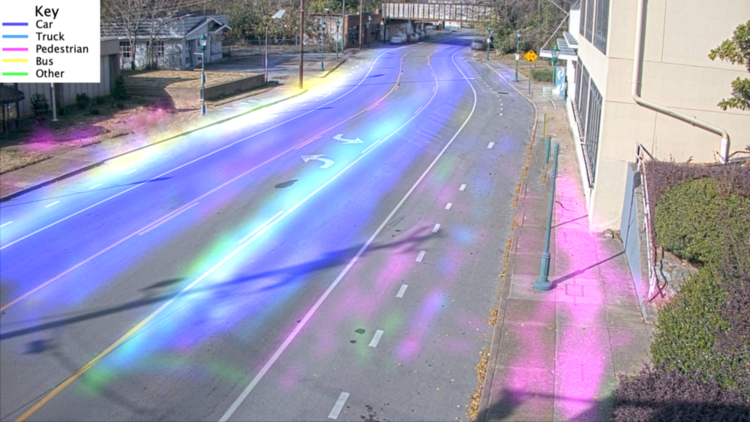Testbed

Testbed Corridor
With the initial investment from UTC, operational support from CDOT, communications infrastructure from EPB, and design and architecture support from TEC, the Smart City Corridor has been launched with a wide array of sensors, computing resources, and experimental wireless networks which have allowed cutting edge research across the Smart City ecosystem. The inaugural research challenge posited by CDOT that the University has initially focused on entails processing information from a variety of sensors, including cameras, LIDAR, RADAR, and audio to better understand how pedestrians are using our cities transportation networks, and prioritize deployments and additional research opportunities that will continue to address our city’s Vision Zero goals.
The initial phase of the testbed consisted of 1.2 miles of urban business and residential areas in the heart of downtown Chattanooga, TN. In 2021, the National Science Foundation funded an expansion to update and expand the footprint of the testbed. The expansion includes a portion of roadway perpendicular to the existing testbed of Highway 27 in downtown Chattanooga, TN. The highway portion of the testbed is deployed with the same technologies as the downtown testbed including communications for connected vehicles, configurable wireless networks, edge computing for AI and general purpose, and sensing technologies (camera, lidar, radar, and air quality).
As of January 2023, two additional expansions have been funded. The first expands the testbed by an additional 27 signalized intersections parallel to the existing downtown portion of the testbed. These intersections provide additional coverage in the core of downtown Chattanooga’s business district, the University of Tennessee at Chattanooga’s campus, and underserved communities in downtown Chattanooga. Lastly, funded through the Federal Highway Administration’s Advanced Transportation and Congestion Management Technologies Deployment program, the entirety of downtown Chattanooga will be outfitted with a wide range of sensors, communication, and edge computing technologies. The expansion will grow the testbed's footprint to over one hundred signalized intersections. The deployment is expected to begin in Q3 of 2023.
Designed for Collaboration
Our testbed—a 1.2 mile, real-world sandbox—is designed to facilitate early-stage research and development. Testing and data collection relies on real-world events, providing the most authentic results. Gathering data from the real world successfully integrates the incalculable nuance and complexity of urban living into research. Our testbed is specifically designed for collaboration with data made easily accessible to partners, a platform to handle more sensors, and more. Researchers are able to use our testbed remotely through an available SDK and/or REST API that enables real-time data ingestion or download datasets based on the user's needs. Currently, a web-based portal is under development that will enable non-programmatic access to data, experimentation submission, model deployment, and resources/experiment monitoring tools for researchers utilizing the testbed.
Technical Specifications
-
11 poles outfitted with air quality sensors, cameras, LIDAR, RADAR, audio recording and networking capabilities.
-
All data gathered from the testbed is available in real-time API to partners.
-
Localized data enter ensures ultra-low latency and high bandwidth connections.
-
Where distance increases latency, edge computing can be used.
Capabilities
-
Air quality tracking
-
Object tracking
-
Traffic light synchronization
-
Audio/video recording
-
Real-time data collection

Results of tracking, categorized by Type. Some signs you can see are of jay walking and stop patterns.